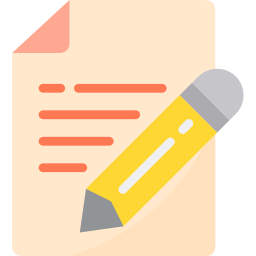Discourse markers in ielts task 1 academic
چه چیزهایی باید در تسک یک آکادمیک نوشته شود و چه چیزهایی نوشته نشود.

IELTS Writing Preparation: Academic IELTS Writing Task 1 Preparation:
ترجمه ی این قسمت برای فهم بهتر انجام شده است و به صورت کلمه به کلمه نمی باشد بلکه خلاصه ی متن انگلیسی می باشد.
Things you should know about Academic Writing Task 1:
- You are asked to describe information presented in graph/ table/ chart/ diagram.
- You have 20 minutes to finish the task and you have to write at least 150 words.
- If you are asked to use the information presented in the graph you must be careful not to copy it.
چیز هایی که باید درباره ی رایتینگ آکادمیک تسک یک آزمون آیلتس بدانید.
از شما خواسته شده است که درباره ی اطلاعات که در جدول یا نمودار وجود دارد بنویسید و آن را توصیف کنید.
شما 20 دقیقه زمان دارید تا این قسمت را کامل کنید و حداقل 150 کلمه بنویسید.
اگر از شما خواسته شده بود که از این اطلاعات ارائه شده در نمودار یا جدول استفاده کنید، به یاد داشته باشید که آنها را کپی نکید.
In Academic Writing task 1, candidates are assessed on their ability to:
• Organize, present and possibly compare data
• Describe the stages of a process or procedure
• Describe an object or event or sequence of events
• Explain how something works
در این قسمت از آزمون دهنده خواسته شده است که:
اطلاعات را طبقه بندی کنند و یا آنها را با هم مقایسه کنند.
مراحل ساخت یک روند و یا پروسه را توصیف کنند.
یک شی یا رخداد و یا روند زمانی یک رخداد را توصیف کنند.
توضیح دهند چگونه یک چیز کار می کند.
The general format for writing academic writing task 1
Introduction + Basic/General Trends + Details Description + Conclusion.
روند کلی یک گزارش به شکل زیر است.
مقدمه + یک روند یا گرایش کلی از جدول یا نمودار + توصیف جزئیات + نتیجه گیری
The IELTS Academic writing task 1 requires several vocabularies. Each of these parts has a specific format and therefore being equipped with the necessary vocabulary will help you to write the task 1 efficiently and will save a great deal of time. Before you go through the details of how to write Academic Writing task 1, you must learn the necessary vocabulary and words first to write a better answer.
برای هر کدام از انواع نمودار و جدول کلمات مرتبطی وجود دارد که با یاد گرفتن و حفظ کردن معنی و کاربرد صحیح آنها می توانید شانس خوبی برای گرفتن نمره ی بالا برای خود محیا کنید.
Four steps should be followed to write a better Academic writing task 1:
1 What type of presentation it is and what it is asking.
2 Collecting data/information.
3 Essay Planning.
4 Representing in an essay form.
در اینجا چهار مرحله وجود دارد.
چه چیزی نمایش داده و چه چیزی از شما خواسته شده است.
جمع آوری اطلاعات و داده ها.
برنامه ریزی برای نوشتن
نوشتن اطلاعات به شکل یک مقاله یا گزارش.
First Step: analyze
analyze the question first .Look whether it is a diagram / table /figure / illustration / graph / figure / chart / flow chart or a picture. Now look what the question is asking to do. For example, the question might ask to compare, contrast, analyze, summarize or more than one thing.
ابتدا به سوال نگاه کنید. ببینید که آیا یک دیاگرام داده شده است یا یک جدول، تصویر، گراف، نمودار جریان صنعتی، نقشه یا .... سپس به سوال نگاه کنید که چه چیزی از شما خواسته است. برای مثال ممکن است در سوال از شما خواسته شده باشد که اطلاعات را با هم مقایسه کنید، آنالیز کنید و یا خلاصه کنید.
Second Step: Collecting data/information
You must collect/ understand the following data and information from the figure.
مرحله ی دوم:
این اطلاعات را باید شما بفهمید و جمع آوری کنید.
Time: Be sure whether the time presented in the graph/ figure are present/ past/ future or mixture of these three. Your writing has to be in the correct Tense according to the time presented.
زمان: به زمان جداول و یا نمودارها دقت کنید. زمان نمودار ممکن است حال، گذشته، آینده و یا تلیقی از هر سه باشد. که در این صورت استفاده از زمان فعل ها باید بر طبق اطلاعات نمودار تغییر کند.
b) Theme: Be sure what the figure/ diagram/ picture is trying to represent.
تم: مطمعن شوید که متوجه شده اید که این تصویر یا جدول و یا نمودار چه چیزی را می خواهد نشان دهد.
c) Place and Position: About what place or field the data are all about?
مکان و موقعیت: مکان و موقعیت این اطلاعات کجا است؟
d) Main Point: What's the central idea of the presented graph/ diagram?
هدف اصلی: هدف اصلی نمایش این اطلاعات چیست؟
e) General Trend: Figure out the General Trend(s).
روند و گرایش کلی اطلاعات چگونه است و به کجا می روند؟
f) Effects & Result: Find out the effects and results.
تاثیرات و نتایج آن را در صورت وجود اطلاعات بررسی کنید
g) Conclusion: Plan what you should include in the conclusion.
بدانید که چه چیزی را می خواهید در نتیجه گیری بیاورید.
Example:
You should spend about 20 minutes on this task.
The graph below shown the unemployment rates in the US and Japan between March 1993 and March 1999.Summarize the information by selecting and reporting the main features and make comparisons where relevant.
You should write at least 150 words.

First Step (worked out): analyze
It is a line graph with 2 lines. The graph is asking to summarize the main features of unemployment rate.
مرحله ی اول: شکل یک لاین گراف با دو خط را نشان می دهد. این نمودار خواسته است اطلاعات نرخ بی کاری را خلاصه نویسی کنیم.
Second Step (worked out): Collecting data/information
Time: From March 1993 to March 1999.
زمان: از مارس 1993 تا مارس 1999 که یک بازه ی شش ساله است.
Theme: Unemployment rates of USA and Japan.
تم: نرخ بی کاری در ژاپن و آمریکا
Place and Position: USA and Japan.
مکان: آمریکا و ژاپن
Main Point: Unemployment rate has decreased in US and has increased in Japan.
هدف اصلی: نرخ بی کاری در آمریکا کاهش یافته است و در ژاپن افزایش داشته است.
General Trend: Initially unemployment rate was higher in USA than Japan but over the period USA managed to reduce the rate and in case of Japan the reverse was true.
روند کلی: در ابتدا نرخ بی کاری در آمریکا بالاتر از ژاپن بوده است و آنها توانسته اند در طی این مدت زمان این نرخ را کاهش بدهند در صورتی که در ژاپن گرایش بی کاری برعکس آمریکا بوده است.
Effects & Result: Effects: unknown. Result: as General Trends.
تاثر و نتیجه: تاثیر: نا مشخص ، نتیجه: مانند روند کلی توضیح داده شده.
Conclusion: Unemployment rate was higher in USA than Japan but over the period USA managed to reduce the rate and in case of Japan the reverse was true.
نتیجه گیری: در ابتدا نرخ بی کاری در آمریکا بالاتر از ژاپن بوده است و آنها توانسته اند در طی این مدت زمان این نرخ را کاهش بدهند در صورتی که در ژاپن گرایش بی کاری برعکس آمریکا بوده است.
The things you should follow in second paragraph IELTS task 1
» Use appropriate tense to describe the data.
» Use transitional words like: besides, as well as, likewise, in addition, additionally, again, on the other hand etc. to make your sentences relevant and coherent.
» Try to mention the initial, highest, lowest and projection points.
در این قسمت باید از زمان درست فعل استفاده کرد.
از کلمات ذکر شده تا جایی که می توانید استفاده کنید، چرا که باعث ایجاد ارتباط معنایی بین جملات و بین پاراگراف ها می شوند و در نتیجه نمره ی بالاتری خواهید گرفت.
سعی کنید ابتدا و انتهای هر روند، بالاترین و پایین ترین عدد ها را ذکر کنید. این اطلاعات از مهمترین داده های شکل می باشند.
Things you should avoid in second paragraph IELTS task 1
» Do not describe all the data and facts presented in the graph.
» Don't include your own opinion, imagination or solution.
» Don't use contraction (can not=can't, do not =don't etc, will not=won't) in your writing.
چیزهایی که نباید در این قسمت نوشت.
تمام اطلاعات داده شده در نمودار و یا جدول را لازم نیست توصیف کنیم و در گذارشمان ذکر کنیم.
درباره ی ایده ی خود، تصورات و راه حل های خود سخن نگویید.
از مخفف کلمات استفاده نکنید.
Example:
As is presented in the line graph, in March 1993, United States had about 7% of their workforce unemployed, which might not seem high unless it is compared to to the unemployment rate of Japan in the same year, where only 2.5% workers were unemployed. However the unemployed rate in USA began to decrease slowly having a fluctuation till 1996 and reached to around 5%. On the contrary, the unemployment rate in Japan got an upward trend and doubled in 5 years. The unemployment rate of both countries intersected in the middle of the year 1998. Afterward the unemployment rate in US remained roughly the same (about 5%) having a similar ration to that of Japan.
How to describe the results
If you want to and really need to describe the result of the graph, then write it at the end of the detailed description. However if writing the results makes something repeated those has already been described and then you need not to write the result apparently.
Example:
USA managed to decline their unemployment rate from 7% to almost 5% in 6 years but on the other hand the rate has increased in Japan from only 2.5% to approximately 5%.
How to write a good and efficient conclusion in IELTS task 1
Conclusion is an important part of the whole writing and that is why you must be careful to write a better conclusion. The conclusion part of the Academic IELTS writing 1 is also knows as summarizing. So write down the main point/theme of the graph in short. You should never include your own point of view, personal opinion or suggestion to solve a problem in conclusion. In some cases of Academic IELTS writing task 1, it optional to write the conclusion, hence the data are already described and summarized before the conclusion. However if you need to write the conclusion part, use one of the following words to start the sentence:
Words or phrases to use in conclusion
In conclusion / in short / to conclude / to sum up / in brief / in summery etc.
Example:
It conclusion, the unemployment rate in the USA decreased in 6 years and the opposite scenario was true for the Japan.
از کلمات و عبارات زیر برای برقراری (Coherence & Cohesion) استفاده کنید. به کار بردن صحیح این کلمات بسیار مهم می باشد.
برای اضافه کردن یک مبحث دیگر از این کلمات استفاده می کنیم. (Addition)
in addition, and, similarly, likewise, as well as, besides, furthermore, also, moreover, and, then, too, not only ... but, even besides, this, that etc.
برای نشان دادن ترتیب اتفاق یک پروسه از ای کلمات استفاده می کنیم. (Sequence)
first(ly), initially, second(ly), to begin with, then, next, earlier/later, after this/that, following this/that, after wards etc.
برای نشان دادن نتیجه از کلمات زیر استفاده می کنیم. (Consequence)
as a result, thus, so, therefore, consequently, it follows that, thereby, eventually, then, in that case, admittedly etc.
برای نشان دادن صحت و درستی یک موضوع از کلمات زیر استفاده می کنیم. (Certainty)
obviously, certainly, plainly, of course, undoubtedly etc.
برای نشان دادن شرط و شرایط از کلمات زیر استفاده می کنیم. (Condition)
if, unless, whether, provided that, for, so that, depending on, only if, providing that etc.
برای توضیح بیشتر از عبارات زیر استفاده می کنیم. (Definition)
is refers to, means, that is, consists of etc.
برای خلاصه کردن یک جمله از این کلمات استفاده می کنیم.(Summary)
in conclusion, in summary, lastly, finally, to sum up, to conclude, to recapitulate, in short etc.
برای مثال زدن از این کلمات استفاده می کنیم. (Example)
for instance, one example, for example, just as, in particular, such as, namely, to illustrate etc.
برای نشان دادن دلیل اتفاق یک موضوع از کلمات زیر استفاده می کنیم.(Reason)
since, as, so, because (of), due to, owing to, the reason, why, in other words, leads to cause etc.
برای نشان دادن زمان جمله از کلمات زیر استفاده می کنیم. (Time)
before, since, as, until, meanwhile, at the moment, when, whenever, as soon as, just as etc.


